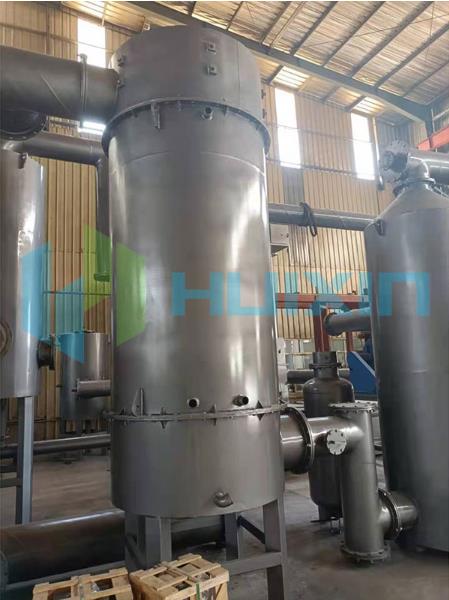 English
English Español
Español  Português
Português  русский
русский  Français
Français  日本語
日本語  Deutsch
Deutsch  tiếng Việt
tiếng Việt  Italiano
Italiano  Nederlands
Nederlands  ภาษาไทย
ภาษาไทย  Polski
Polski  한국어
한국어  Svenska
Svenska  magyar
magyar  Malay
Malay  বাংলা ভাষার
বাংলা ভাষার  Dansk
Dansk  Suomi
Suomi  हिन्दी
हिन्दी  Pilipino
Pilipino  Türkçe
Türkçe  Gaeilge
Gaeilge  العربية
العربية  Indonesia
Indonesia  Norsk
Norsk  تمل
تمل  český
český  ελληνικά
ελληνικά  український
український  Javanese
Javanese  فارسی
فارسی  தமிழ்
தமிழ்  తెలుగు
తెలుగు  नेपाली
नेपाली  Burmese
Burmese  български
български  ລາວ
ລາວ  Latine
Latine  Қазақша
Қазақша  Euskal
Euskal  Azərbaycan
Azərbaycan  Slovenský jazyk
Slovenský jazyk  Македонски
Македонски  Lietuvos
Lietuvos  Eesti Keel
Eesti Keel  Română
Română  Slovenski
Slovenski  मराठी
मराठी  Srpski језик
Srpski језик
What are the features and functions of heat exchangers?
2022-08-17
A heat exchanger is a device used to transfer heat from a hot fluid to a cold fluid to meet specified process requirements. It is an industrial application of convective heat transfer and heat conduction.
2. All stainless steel production, long service life, up to more than 20 years.
3. The laminar flow is changed to turbulent flow, which improves the heat exchange efficiency and reduces the thermal resistance.
4. Fast heat exchange, high temperature resistance (400℃), high pressure resistance (2.5Mpa).
5. Compact structure, small footprint, light weight, easy installation, saving civil construction investment.
6. The design is flexible, the specifications are complete, the practicality is strong, and the money is saved.
7. Wide range of application conditions, suitable for large pressure, temperature range and heat exchange of various media.
8. Low maintenance cost, easy operation, long cleaning cycle and convenient cleaning.
9. The use of nano thermal film technology significantly increases the heat transfer coefficient.
10. It has a wide range of applications and can be widely used in thermal power, factories and mines, petrochemicals, urban central heating, food and medicine, energy electronics, mechanical light industry and other fields.
Heat exchangers can be classified in different ways. According to its operation process, it can be divided into three categories: partition type, hybrid type, regenerative type (or regenerative type); according to the compactness of its surface, it can be divided into two types: compact type and non-compact type.
Heat Exchanger Performance Characteristics:
1. High efficiency and energy saving, the heat transfer coefficient of the heat exchanger is 6000-8000W/m2.0C.2. All stainless steel production, long service life, up to more than 20 years.
3. The laminar flow is changed to turbulent flow, which improves the heat exchange efficiency and reduces the thermal resistance.
4. Fast heat exchange, high temperature resistance (400℃), high pressure resistance (2.5Mpa).
5. Compact structure, small footprint, light weight, easy installation, saving civil construction investment.
6. The design is flexible, the specifications are complete, the practicality is strong, and the money is saved.
7. Wide range of application conditions, suitable for large pressure, temperature range and heat exchange of various media.
8. Low maintenance cost, easy operation, long cleaning cycle and convenient cleaning.
9. The use of nano thermal film technology significantly increases the heat transfer coefficient.
10. It has a wide range of applications and can be widely used in thermal power, factories and mines, petrochemicals, urban central heating, food and medicine, energy electronics, mechanical light industry and other fields.
Heat exchangers can be classified in different ways. According to its operation process, it can be divided into three categories: partition type, hybrid type, regenerative type (or regenerative type); according to the compactness of its surface, it can be divided into two types: compact type and non-compact type.
X
We use cookies to offer you a better browsing experience, analyze site traffic and personalize content. By using this site, you agree to our use of cookies.
Privacy Policy





